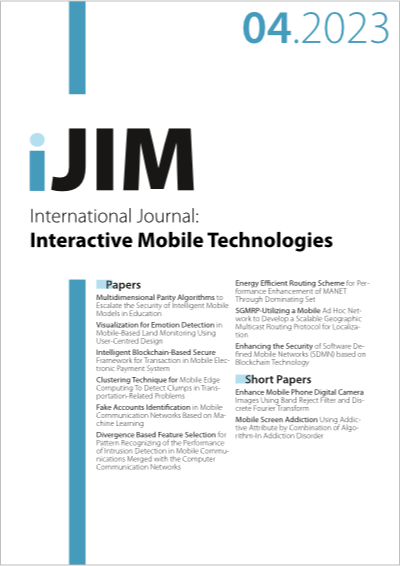Clustering Technique for Mobile Edge Computing To Detect Clumps in Transportation-Related Problems
DOI:
https://doi.org/10.3991/ijim.v17i04.37801Keywords:
Mobile edge computing (MEC); transportation problems; save time; clustering technique; energy efficiency; resource optimization;Abstract
The daily functioning of civilization depends heavily on transportation. In most cities, a sizable section of the working class consistently attends both employment and education. There are many different things you can do when commuting, such as unwinding, eating out, and other things. The most popular means of transportation in North Cyprus, particularly in developing cities, is island transportation, which includes the usage of both private cars and commercial vehicles. The advent of edge computing, which offers the opportunity to connect potent processing servers next to the mobile device, is a significant step toward improving user experience and reducing resource use. Mobile Edge Computing is the next trustworthy approach for how mobile devices consume communications and computing. Offloading computation is a key component developing mobile edge computing, which enables devices to get around clustering techniques' limitations and get around computing, storage, and energy constraints. However, computation offloading is not always the best strategy to use; making choosing unloading is a critical step that requires consideration of numerous factors. For instance, shifting the high-resource node to an edge server and granting similar capabilities to the low-resource nodes would delegate heavy duties to the external unit inside the network. The evaluations' results were noteworthy and substantial. Problems involving the vehicles of institutions and organizations can be resolved using the suggested solution to the school bus routing issue. We also test the impact of network latency on the delivery of a particular result using an Edge Computing simulator.
Downloads
Published
How to Cite
Issue
Section
License
Copyright (c) 2023 Dr. J. Albert Mayan, S.V. Manikanthan, Azham Hussain, S. Nithyaselvakumari, A. Vinnarasi

This work is licensed under a Creative Commons Attribution 4.0 International License.


